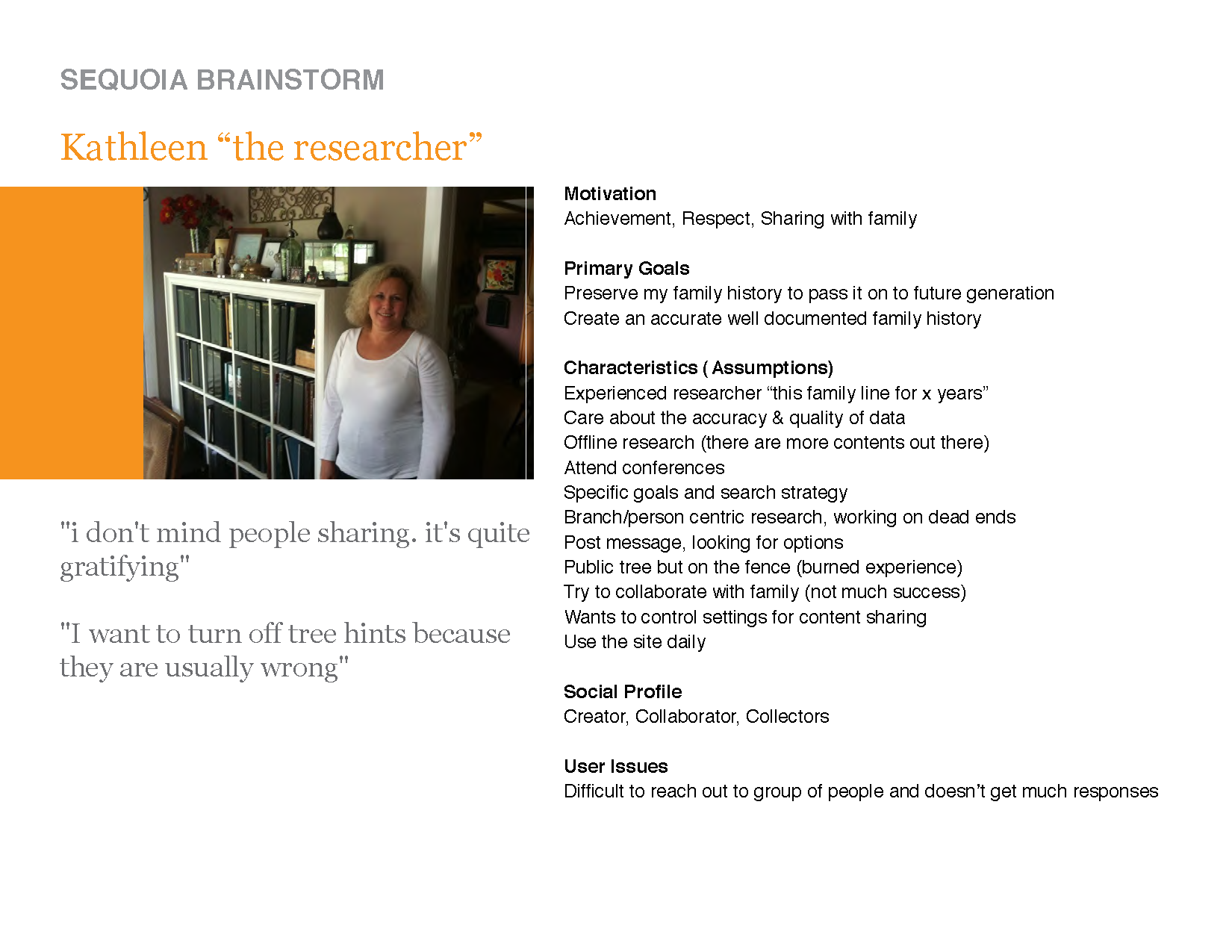Challenge
Ancestry.com has more than 2 million worldwide subscribers. Forty percent of new users join the service expecting to find and connect with others who were currently researching their family tree or to discover a family tree that someone had already created. However, the ‘Member Connect’ feature was outdated and often placed users on a path where they would connect with the wrong family tree. This resulted in tension between new users and experienced users. Also a lack of easy to understand permission settings caused members to opt for private trees.
The product team decided to revisit the community feature and explore how to encourage an active and healthy social community where existing, experienced members are willing to collaborate with new and other members.
“I don’t mind sharing my research with other members. It’s quite gratifying!”
Solution
We started by interviewing our members to better understand the ideal community space and how they would like to interact with other members. We saw opportunities with two user groups: Novice users who are new to the service, look for any insights about their family, and have many unique stories and records to share with others; Open Sharers who are protective about their research but are willing to share and collaborate with others when they are recognised and respected for their work. They are also keen to get the truth out there and preserve true legacy of their ancestors.
Based on key learnings, we decided to build a tailored service where members can come together to discover, share and connect with others. We felt it was important to start with most accurate representation of the ancestor or family tree to set the members on the right path. Leveraging the latest available data technology, we decided to build Ancestry Commons – a smart summary view of an ancestor and family tree aggregated from official records and member’s data. Users can review and easily save any new or relevant information. We also made it easy to discover and connect with other members who are researching the same family members then allow them to decide what information to share.
We also put together a user advisory group and interviewed members regularly to get their input on all critical design decisions. This allowed us to validate the concepts early on and narrow our focus for the product direction. Then, we built the proof of concept via an agile, SCRUM process and successfully launched the Alpha phase of the project.
Discovery
Recommendations
Activities & Deliverables
User Research, Concept Prototype, Interaction Design, Branding, Product Management, SCRUM











